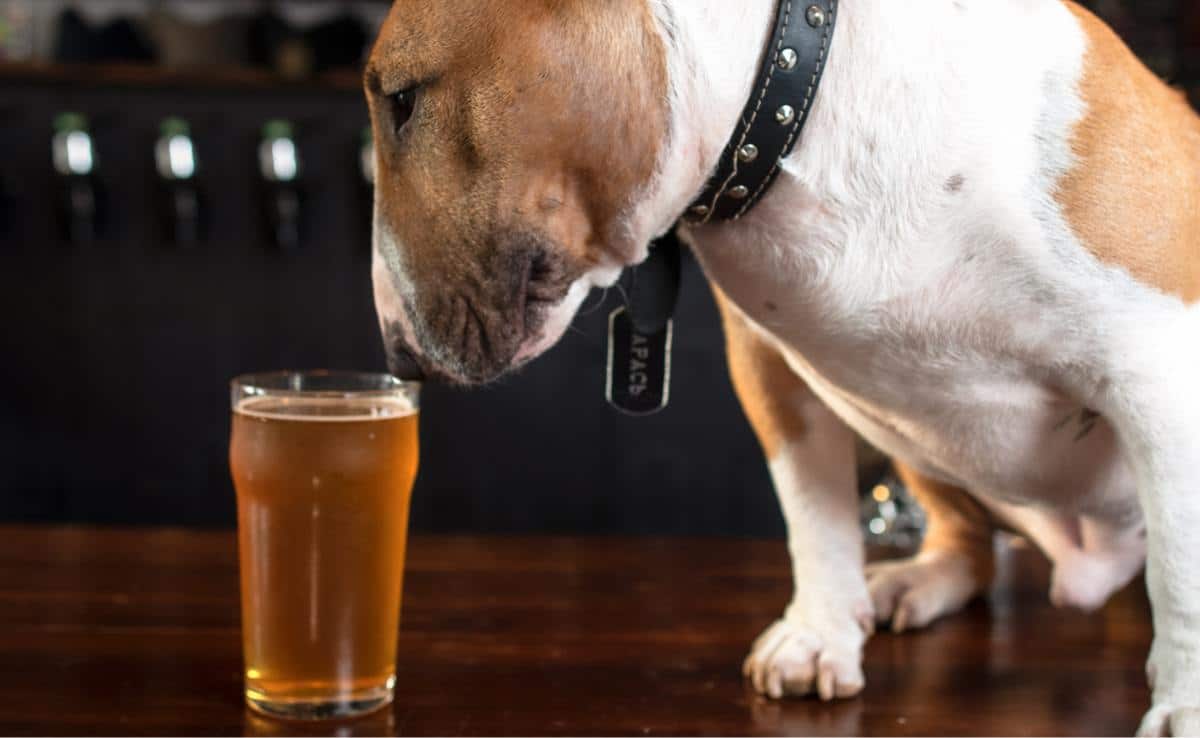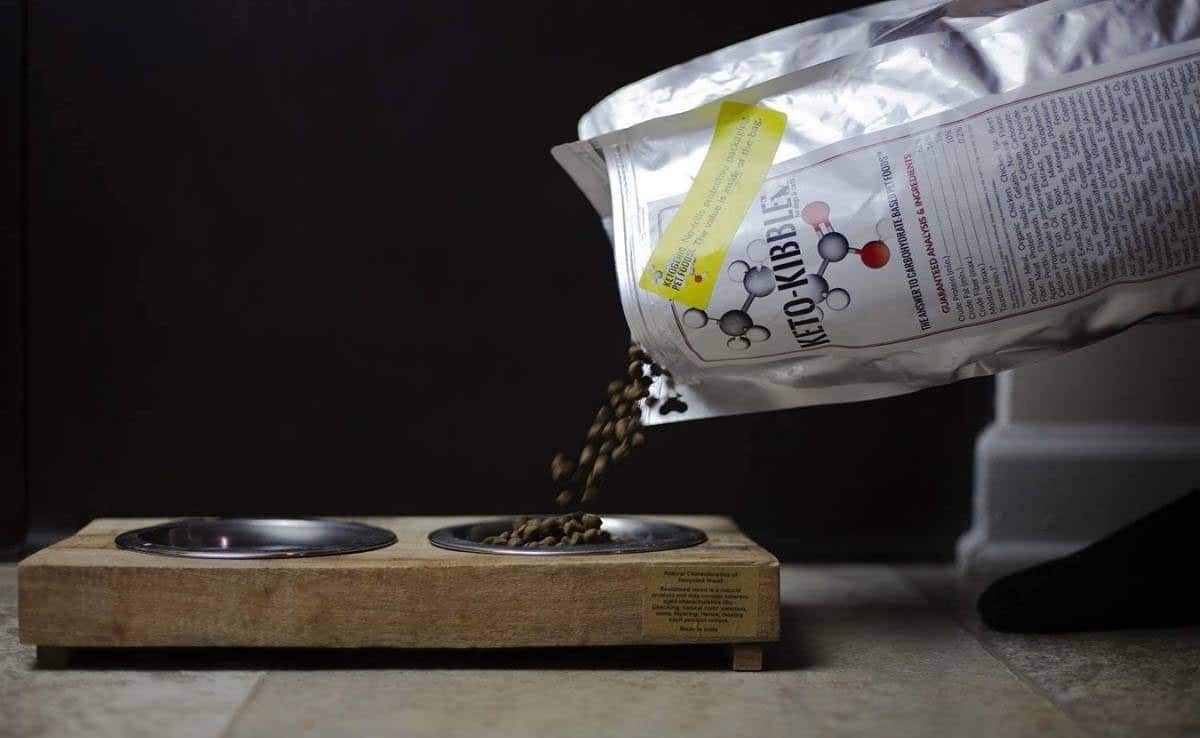Dog Ate Gummy Bears? A Vet Explains What Happens Next (And When To Panic!)
When you purchase through links on our site, we may earn a commission. Here’s how it works.
I’m a veterinarian, and yes, I’ve seen what happens when dogs eat gummy bears.
Table of Contents
Your pup just inhaled a few gummies (or the entire bag), and now you’re Googling in panic mode. Are they going to be okay? Should you go to the ER? The short answer: It depends on the type of gummy.
Here’s the truth: Gummy bears can be dangerous for dogs. Some pups just get a stomach ache. Others face serious issues like xylitol poisoning and THC toxicity, which can sometimes lead to death.
If you’re wondering, “What happens if a dog eats gummy bears?” or “Should I be worried?” I’ve got you. Let me walk you through what to watch for, what to do next, and when to pick up the phone.
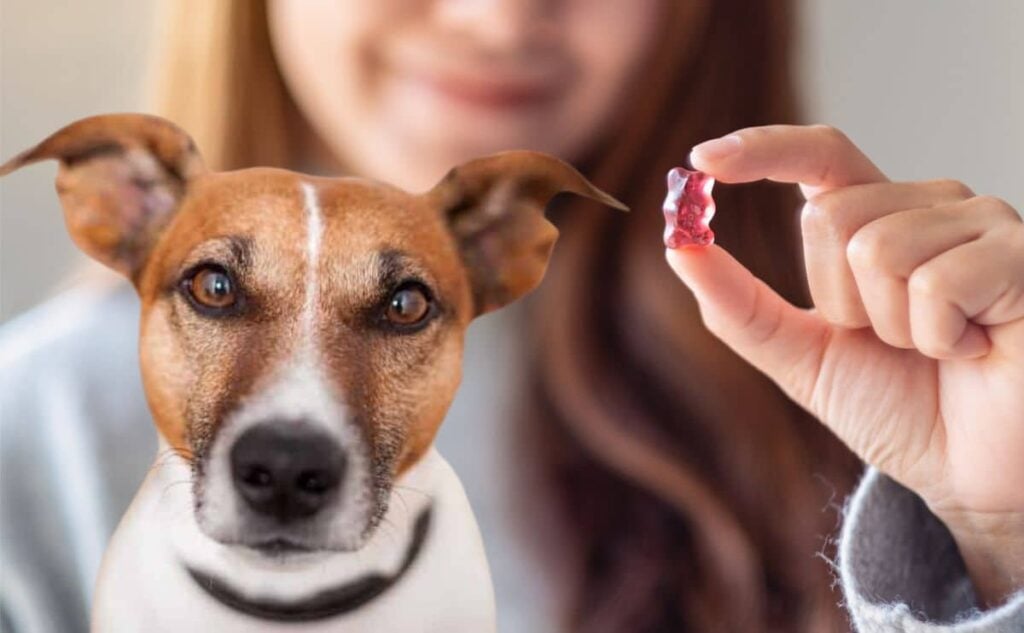
Should You Be Worried If Your Dog Ate Gummy Bears?
If you’re here, your dog just got into some gummy bears, maybe just a few, perhaps the whole bag. First things first: not all gummy bears are dangerous. But depending on the ingredients, your dog’s size, and how many were eaten, it could be completely harmless… or an emergency.
As a veterinarian, I’ve seen everything from mild bellyaches to full-blown toxicity. So take a breath. I’ll walk you through how to tell the difference, what signs to look for, and when it’s time to get help.
Quick answer: Call your vet or pet poison helpline immediately if the gummy bears are sugar-free or contain xylitol or THC (edibles).
How Many Gummy Bears Are Too Much? (By Dog Size)
So your dog snuck a gummy (or five). The first question on every dog owner’s mind: “Is that enough to hurt them?” The answer depends on three significant factors:
- What type of gummy is it
- How many were eaten
- And how big or small your dog is
Rule Of Thumb: The Smaller The Dog, The Bigger The Risk
Small dogs have less body mass to buffer against sugar overload and toxic ingredients like xylitol or THC. But don’t guess based on how many gummies your dog ate…
Instead, assess the type of gummy, your dog’s weight, and, most importantly, the ingredients. If xylitol or THC is involved, call your vet immediately.
Sugar, Xylitol, Or THC? What’s Actually Dangerous
Not all gummy bears are created equal. When it comes to dogs, the difference between mild gas and a life-threatening emergency comes down to what’s inside the gummy.
Let’s break it down ingredient by ingredient.
Regular Sugar Gummies
These are your standard, off-the-shelf gummies. These ones are made with sugar, corn syrup, gelatin, and artificial colors and formulated without artificial sweeteners.
- Risk Level: Usually low
- What can happen: Upset stomach, bloating, diarrhea
- When to worry: If your dog eats a large quantity (like half or all of the bag), it could lead to pancreatitis, especially in small dogs or those with sensitive stomachs.
One or two bears, especially if eaten by a large dog, are unlikely to cause any significant adverse effects at all. However, if eaten in large quantities, especially by small dogs or puppies, they may cause gastroenteritis (an upset tummy), resulting in vomiting and diarrhea. Therefore, they are best to be avoided.
Vet tip: The occasional sugar-based gummy won’t usually cause long-term harm. But it’s still not a healthy snack, and you should keep them well out of reach.

A Quick Personal Story: When My Dog Bonkers Ate A Gummy Bear
Not long ago, my daughter was snacking on a small bag of Haribo Gold Bears when, out of the corner of my eye, I saw her slip one to our dog. Bonkers, a medium-sized dog, is food obsessed and gladly accepted this cheeky treat.
My heart stopped for a second. I’d written about candy risks before, but this time it was happening in my living room.
I checked the label immediately. Thankfully, the Haribo gummies didn’t contain xylitol, and after carefully monitoring Bonkers over several hours, he showed no symptoms. He was totally fine.
But that moment was a wake-up call.
Now, whenever my daughter is eating sweets (or anything that could be toxic to dogs), I keep a much closer eye on them both. Kids love to share, but sometimes that generosity can cause unintended harm.
– Emma Braby, Mom to 2 Rescue Dogs, a Toddler, & Writer For Canine Journal
Sugar-Free Gummies (Xylitol Toxicity)
These are the most dangerous gummy bear types by far. It’s also why it is best never to feed gummy candies to dogs.
Xylitol is a common sugar substitute found in sugar-free candy like jelly beans, gum, baked goods such as protein bars, some peanut butter, mouthwash, toothpaste, and some medications. It’s incredibly toxic to dogs.
But you also need to be aware that even if a product doesn’t list xylitol as an ingredient, the inclusion of “birch sugar” or “birch sap” still presents the same dangers as xylitol because they’re derived from the same toxic plant.
- What it does: Triggers a rapid insulin spike, causing dangerously low blood sugar (hypoglycemia). In higher doses, it can lead to liver failure.
- How fast it happens: Symptoms can start within 15–30 minutes after ingestion.
- What to watch for: Vomiting, weakness, tremors, seizures, and collapse.
Even one sugar-free gummy with xylitol can be life-threatening for dogs, especially small breeds. Watch this short video from the U.S. Food and Drug Administration (FDA) explaining more about xylitol poisoning.
You Checked For Xylitol, But What About These?
Other artificial sweeteners such as maltitol, sorbitol, and steviol glycosides (Stevia) are also found in gummy bears and gummy candies. Fortunately, these are non-toxic to dogs.
However, you might remember the popular product reviews for the sugar-free Haribo gummy bears. When eaten in larger quantities, these artificially sweetened bears can cause significant gastrointestinal upsets and diarrhea.
THC Gummies (Cannabis Edibles)
If your dog got into a gummy labeled with CBD, THC, or anything from a dispensary, this is a different kind of emergency. Dogs are extremely sensitive to THC, and unlike humans, they don’t “ride it out” comfortably.
Due to its legalization in some states, marijuana (Cannabis sativa/Cannabis indica) is becoming more commonly used for medicinal purposes and recreational use. As a result, cases of accidental pet intoxication have also significantly increased over the last few years, according to the Pet Poison Helpline.
Vet Tip: If your dog ate a gummy with THC, even a small one, go to the vet immediately.
THC Poisoning In Dogs: Symptoms Every Owner Should Know
Cannabinoids are the active substances from the marijuana plant, and the most common are tetrahydrocannabinol (THC) and cannabidiol (CBD). THC is responsible for the psychoactive or “high-inducing” effects and is the active ingredient that is toxic to pets.
- What it does: It affects the central nervous system, causing confusion, instability, and potentially severe neurological symptoms.
- What to watch for:
- Disorientation or “drunk walking”
- Excessive drooling
- Tremors or seizures
- Incontinence
- Low heart rate or lethargy
Dogs can’t metabolize THC efficiently, so the effects can last much longer than in humans, sometimes 24 hours or more.
If you suspect your pup has been exposed to marijuana in any form, contact your veterinarian immediately. Always be honest about what your pet has eaten. Your veterinarian’s job and priority is to successfully treat your dog, not to report you to the police.
Not Sure What They Ate? Here’s What To Do
If you’re not sure what kind of gummy your dog ate, check the label immediately. If there’s no ingredient list (or it’s homemade or unmarked), err on the side of caution and call your vet or a pet poison control hotline right away.
What About Candy Packaging?
It’s also worth noting that some dogs will eat sweets and candies along with the plastic wrapper. Plastic is a choking hazard and risks causing a blockage in the gut (intestinal obstruction).
Signs of intestinal obstruction are vomiting (often multiple times), struggling to pass feces, and loss of appetite. They will also struggle to keep down food/water, and this may be accompanied by diarrhea.
If you suspect your dog has eaten plastic or notice signs of a blockage, contact your vet immediately. This is an emergency and should be seen as soon as possible.
What Are The Other Major Risks Of Dogs Eating Gummy Bears?
Regular candy gummy bears made without artificial sweeteners are unlikely to cause serious harm to dogs, especially if eaten in small amounts. You may not notice any adverse effects at all, especially if only one or two bears have been eaten.
Remember, if you have any concerns about your pet’s health, it’s always best to speak to a veterinary professional.

Gastroenteritis
Dogs that have eaten a large number of gummies are more likely to end up with an upset tummy, especially smaller breeds or puppies. Signs of gastroenteritis include vomiting, diarrhea, abdominal pain, and loss of interest in their food.
This is usually transient and will resolve with time. It’s still always best to get advice from your vet, especially for puppies and small-breed dogs. Smaller dogs can quickly become dehydrated and hypoglycemic (low blood sugar levels).
Low Blood Sugar & Liver Damage
One of the main reasons we should avoid feeding our dogs gummy bears and other candies is that some contain xylitol. This artificial sweetener is safe for humans but highly toxic to dogs. The toxicity is dose-dependent, and even small amounts can be fatal, especially to small dogs.
At toxic doses, xylitol causes a significant drop in blood glucose (blood sugar) levels, known as hypoglycemia. Signs of hypoglycemia start with vomiting, weakness, and wobbliness and progress to tremors, seizures, and death as the blood glucose levels decrease.
Signs of hypoglycemia can occur as soon as 30-60 minutes after a dog ingests xylitol. These effects can last for over 12 hours and are deadly if left untreated.
Unfortunately, xylitol can also cause hepatic necrosis, severe and sudden damage to the liver that can progress to acute liver failure. Signs of liver damage may not reveal themselves for 12-24 hours after exposure or longer.
As the liver is responsible for producing many of the blood’s clotting factors, failure can even lead to spontaneous internal bleeding (coagulopathy). Dogs that develop hepatic necrosis have a much more guarded prognosis for recovery and require extensive medical treatment.
Time is of the essence when it comes to xylitol toxicity, and the sooner you can get your dog to a vet, the better.
What Happens (And When): Symptoms To Watch For After Gummy Ingestion
So your dog ate a gummy (or several), and now you’re watching them like a hawk. But how soon would symptoms appear, and what exactly should you look for?
As a vet, here’s how I guide worried pet parents: pay close attention to when symptoms appear and what they look like. Some issues happen fast, others take hours, and specific ingredients (like xylitol or THC) are far more dangerous.
0–1 Hour After Eating
This is the critical window for early signs, especially if the gummy has xylitol or THC. Watch for:
- Vomiting
- Lip licking or drooling
- Restlessness or whining
- Lethargy or sudden weakness
- Disorientation or “drunk walking” (common with THC)
If your dog ate sugar-free gummies or anything THC-infused, symptoms may escalate quickly. Call your vet or a poison hotline immediately.
1–4 Hours After Eating
Symptoms often peak in this time frame. This is when your dog’s body begins reacting more intensely. Watch for:
- Continued vomiting or diarrhea
- Wobbliness, trembling, or twitching
- Dilated pupils
- Involuntary urination
- Seizures (in severe cases of xylitol or THC toxicity)
- Slowed reaction times or confusion
If more than one symptom appears, or if your dog is very small, don’t wait. Get help immediately.
4–12+ Hours Later
Some dogs, especially those who ingested THC, may not show symptoms until hours, sometimes days, later. Or they may appear to get worse after a brief period of improvement. Late-stage signs may include:
- Deep sedation or unresponsiveness
- Incontinence continuing overnight
- Low heart rate
- “Zoned-out” behavior or ongoing tremors
- Lack of coordination, even at rest
Important: THC effects in dogs can last up to 24 hours or more, and symptoms can come in waves.
📞 Call The Vet If
- Your dog ate anything sugar-free, especially with xylitol
- Symptoms are worsening instead of improving
- There’s vomiting paired with tremors or collapse
- Your dog is very young, old, or has a health condition
- You’re not sure what kind of gummy was eaten
Bottom Line: If your dog seems completely fine after 4–6 hours and you’re confident the gummy was sugar-based only, they’ll likely be okay. But you should monitor them closely for at least 12–24 hours to be safe. When in doubt, trust your instincts. Early treatment saves lives.
What To Do Right Now: Step-by-Step Vet Advice
If your dog just ate gummy bears, whether it was one or a dozen, here’s exactly what you should do in the next few minutes. No guesswork. No panic.
As a veterinarian, these are the same steps I’d walk any client through on a phone call.
Step 1: Stay Calm, Observe & Check Your Dog
Before you rush to Google or grab hydrogen peroxide (don’t do this unless your vet says so!), take a deep breath. Dogs feed off our energy. Panic can escalate their stress, especially if symptoms start.
- Is your dog acting normal?
- Any vomiting, drooling, or wobbling?
- Were the gummies sugar-free, THC-infused, or regular?
If you notice signs of distress, go to the nearest emergency vet ASAP. These signs may include collapse, seizures, or tremors. If you know your pup has eaten gummies containing toxic ingredients such as xylitol or marijuana, contact your veterinarian immediately.
Pro Tip: Take a photo of the packaging if available. It helps if you need to call your vet or poison control.
Step 2: Clear The Area
Clean up any remaining gummy bears and their packaging. Ensure your canine companion and other pets can’t get to them. If the trash can is accessible, make sure it is pet-secure or consider moving it from reach. We have a guide on the best pet-proof trash cans.

Step 3: Check The Ingredients
Find the gummy packaging and look for:
- Xylitol (often listed as “sugar alcohol” or under inactive ingredients)
- THC or CBD
- Anything labeled “sugar-free” or “low-carb” (usually a red flag for xylitol)
Look up the ingredients online if the packaging is missing. Xylitol is sometimes listed under E967 or INS 967. If you aren’t sure of the brand or ingredients, make sure you tell the vet.
Gather as much information as possible before you call the vet. Try to work out how many were eaten. You might need to estimate how much of the pack is missing.
If you suspect xylitol or THC, call your vet or poison control immediately. Don’t wait for symptoms.
Step 4: Call The Right Help
- If you know it was sugar-free or THC-infused, skip the guessing. This is a medical emergency.
- Not sure what was eaten? Call anyway; it’s better to be safe.
📞 Emergency Numbers:
- ASPCA Poison Control: 888-426-4435
- Pet Poison Helpline: 855-764-7661
- Or contact your local emergency vet clinic
Give them all the information you have gathered so far, as well as your pet’s weight, breed, age, and if they have any illnesses.
If your dog is currently well and ate just a few regular gummies, your vet may recommend monitoring them at home. You must watch for any signs of illness, such as vomiting or diarrhea.
If your pup is sick, has eaten the plastic packaging, or has suspected xylitol ingestion, your vet will ask you to bring them down to the clinic for an examination and treatment as appropriate. If you have the packaging, bring it with you to the vet.
Step 5: Monitor Closely
If your dog ate regular sugar-based gummies and seems okay:
- Watch them for at least 12–24 hours
- Look for vomiting, diarrhea, lethargy, confusion, or any sudden changes
- Offer small sips of water but no food until 6–8 hours have passed without vomiting

Step 6: Be Ready To Head To The Vet
If symptoms show up, or if you’re even slightly unsure, don’t wait. And even if they seem ok now, they could take a turn for the worse. Be prepared to visit the vet at any point, and remember that early intervention often means faster recovery and lower costs.
Bottom Line: You don’t have to figure this out alone. This is what vets and poison control hotlines are here for. The sooner you act, the better the outcome.
What Vets Actually Do When You Bring Your Dog In
If you’ve called your vet or rushed to the emergency clinic, you might wonder: “What happens next? What are they going to do to my dog?”
Let me walk you through what to expect so you’re prepared and less overwhelmed.
First: A Full Assessment
The vet will start with a thorough exam, asking questions like:
- What kind of gummy was it?
- How many were eaten, and when?
- Is your dog showing any symptoms?
- Are they on any medications or have any health issues?
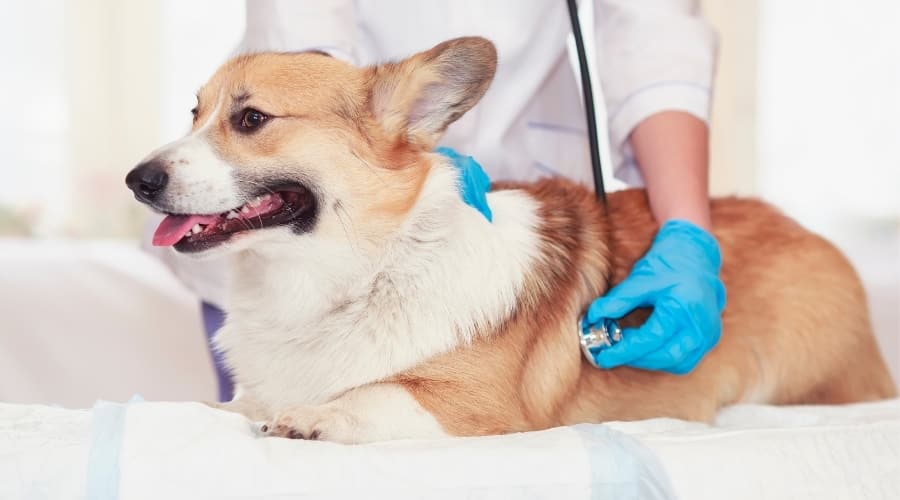
Vital signs will be checked right away, including heart rate, temperature, breathing, and neurological status (especially if THC is involved).
If the Gummy Was Eaten Recently…
If ingestion happened within the last 1–2 hours and it’s safe to do so, the vet may try to induce vomiting or give activated charcoal to absorb any remaining toxins. Please do not attempt this yourself because the administration depends on the following:
- The type of gummy (sugar, xylitol, THC)
- Your dog’s condition (alert, responsive, able to vomit safely)
- The timing since ingestion
If Symptoms Are Present…
If your dog is already showing symptoms, treatment becomes more focused and supportive, including:
- IV fluids to flush toxins and stabilize hydration
- Medications for seizures, nausea, or tremors
- Monitoring of blood sugar (especially with xylitol ingestion)
- Hospitalization for ongoing observation in severe cases
Xylitol cases often require 24–48 hours of monitoring, especially if blood sugar or liver values are affected.
Cost & Duration: What To Expect
Emergency care costs can add up quickly, especially in serious cases.
If your dog needs hospitalization for xylitol or THC poisoning, treatment may involve IV fluids, lab monitoring, and round-the-clock care. In these situations, vet bills can easily reach several thousand dollars, depending on how severe the symptoms are and how long your dog needs to stay.
Bottom Line: Your vet’s goal is to stabilize, support, and protect your dog’s vital systems while the toxin leaves their body. Most dogs recover well with quick care, but early action is key.
How Pet Insurance Can Help
No one plans for their dog to eat a bag of gummy bears. But when it happens, emergency vet bills can skyrocket fast, especially if xylitol or THC is involved. That’s where pet insurance can make a huge difference.
Pet insurance won’t stop your dog from eating something they shouldn’t. But it can turn a financial panic into a manageable situation, letting you focus on helping your pup recover, not how you will pay for the entire vet bill.
Our pet insurance experts have reviewed the best pet insurance to help you find the best coverage for you and your pup.
Gummy Bear Ingestion: A Vet’s Recap Of What To Expect
For dogs that have eaten regular pieces, no major veterinary intervention is usually required. However, as large quantities can cause gastroenteritis, your vet may prescribe treatment for an upset tummy.
If your pup has eaten sugar-free gummies containing the artificial sweetener xylitol, the situation is completely different. Time is of the essence, and veterinary attention should be sought as soon as possible. If your dog has only just eaten them, your vet will induce vomiting if it is safe to do so.
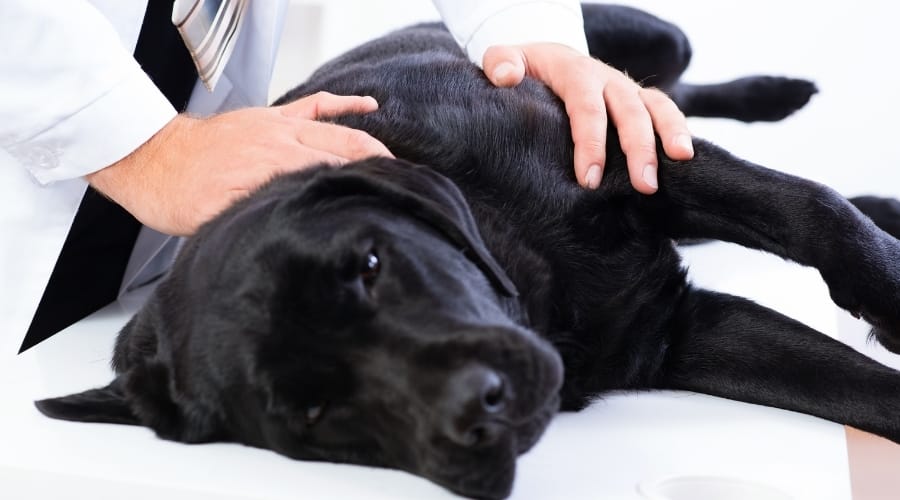
Your pup may need to stay in the hospital for blood tests and be placed on an IV glucose drip until the toxic effects have passed. There is no known antidote for xylitol toxicity.
Unfortunately, for dogs that go on to develop hepatic necrosis or liver damage, the prognosis is guarded. These dogs often require long periods of intensive hospital care to try and support the liver, and some will die from xylitol toxicity despite the best medical care.
If your dog has accidentally ingested marijuana in the form of THC gummy bears, there is also no antidote. But most dogs do well with supportive care in the hospital on an IV drip. Activated charcoal is sometimes used to help with detoxification in these cases.
Can Dogs Eat Gummy Bears? Vet Answers FAQs
You’ve got questions, especially if your dog only ate one or two gummy bears. Here’s what I hear most often from concerned pet parents (and what you need to know). If you have a question I haven’t covered, ask us in the comments, and we’ll get back to you with an answer.
Can One Gummy Bear Hurt My Dog?
If it was a regular sugar-based gummy, one is unlikely to cause serious harm. Though it might still upset your dog’s stomach. But if it is sugar-free (with xylitol) or THC-infused, even a single gummy can be dangerous, especially for small dogs.
You should also take care of your dog that is diabetic, as the sugar may destabilize them. When in doubt, call your vet.
What If My Dog Swallowed The Whole Gummy Without Chewing?
That’s often better than chewing because it may reduce how much was absorbed. Still, the type of gummy matters more than how it was eaten. Check the ingredients as soon as possible.
My Dog Is Large, Does That Make It Less Serious?
Bigger dogs have more body mass, so they’re less affected by small amounts. But xylitol and THC are potent enough that even large dogs can have severe reactions if the dose is high enough.
How Soon Will I Know If Something’s Wrong?
Symptoms can appear within 15 to 30 minutes of xylitol or THC ingestion. Regular sugar-based gummies may take a few hours to show signs of stomach upset.
Should I Try To Make My Dog Throw Up At Home?
Not without vet guidance. Inducing vomiting can be dangerous in some cases. It’s always safer to call your vet first, and they’ll tell you if and how to do it safely.
If your dog has low blood glucose levels from xylitol toxicity, it could make them even more unwell. Additionally, the sedative effects of marijuana toxicity can put them at risk of choking.
Therefore, the decision to induce vomiting should only ever be made by a veterinary professional who will perform the procedure as safely as possible if it is required.
How Much Xylitol Is Toxic To Dogs?
Studies have reported that as little as 0.1g xylitol per kg of body weight is enough to cause hypoglycemia in dogs. Xylitol amounts in food will vary depending on brand, product, and flavor.
Even a stick of gum or a few gummy bears could be enough to poison a small dog. Hepatic necrosis is reported more commonly with higher doses of xylitol ingestion at 0.5g per kg.
Keep Your Pup Safe & Out Of The Snack Stash
You’re not alone if your dog has a sweet tooth for forbidden treats. But the good news is, there are smarter ways to redirect that curiosity.
A high-quality, healthy, balanced diet helps reduce food-driven scavenging, and we have plenty of vet-approved nutrition tips to guide you. Teaching basic commands like “leave” can be a total lifesaver when something dangerous hits the floor.
Interactive toys can keep your dog mentally stimulated and too busy to beg for snacks. Durable chew toys also satisfy that urge to “mouth” things, and ideally, something that’s not your kid’s candy.
Got your own gummy bear horror story? Did your dog sneak a sweet? Drop your tale in the comments with no judgment, just lessons!

